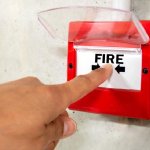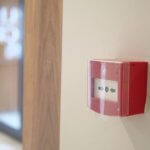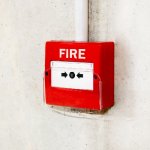BS 5839-1:2025 – The Latest Fire Alarm Standard for UK Non-Domestic Buildings
On April 30, 2025, the British Standards Institution issued BS 5839-1:2025, updating the previous 2017 version. This updated standard outlines the best practices for fire alarm system design, installation, commissioning, and maintenance in commercial and other non-residential properties across the UK.
What Does BS 5839-1 Cover?
BS 5839-1 sets the framework for fire alarm systems in non-domestic buildings and is referenced within the UK Building Regulations (Approved Document B). It covers system types, device placement, performance expectations, and ongoing maintenance to ensure safety and regulatory compliance.
Key Updates in the 2025 Edition
- Detector Recommendations for Sleeping Areas
The new guidance prioritises smoke detectors over heat detectors in sleeping accommodations such as hotels, care homes, and student housing for quicker fire detection. - Expanded Scope for Categories
Lift shafts must now be included in L4 systems, and detection in certain low-risk lobby areas is also required depending on the category. - Improved Manual Call Point Placement
Manual call points should be positioned in frequently occupied areas to improve accessibility and minimise false alarms. - Lockdown Alert Tones
Fire alarm panels may incorporate lockdown tones, but these must be easily distinguishable from fire alarm signals. - Accounting for Ceiling Obstructions
Installers are required to consider beams, ductwork, or other obstacles that could create blind spots for detectors. - Faster Activation and Fault Reporting
Fire alarm activations must be reported within 90 seconds, and fault signals within 3 minutes to speed response. - Updated Battery and Cabling Requirements
Red mains cables are mandatory for clear identification, and the battery backup sizing method has changed, requiring existing systems to be reviewed. - Greater Emphasis on Visual Alarm Devices
There’s increased focus on visual alarms to aid deaf or hard-of-hearing occupants. - Mandatory Zone Plans for Multi-Zone Buildings
Zone plans must be displayed near control panels in buildings with multiple zones to aid quick fire location identification. - Residential Care Premises Requirements
Fire alarms in residential care facilities must now automatically alert central monitoring stations for rapid response. - Flexible Service Intervals and Maintenance
Service intervals can now range from 5 to 7 months, allowing flexibility beyond the previous fixed 6-month period. Maintenance must include clock checks, log maintenance, removal of outdated devices, and accessible controls. Technicians should maintain their skills through Continuing Professional Development (CPD). - Revised Documentation and Certification
Certificates, logs, and documentation templates have been updated. Any system modifications require formal Modification Certificates, and all variations must be logged.
Why These Changes Are Important
The 2025 update to BS 5839-1 improves fire safety by:
- Speeding up detection, especially in sleeping areas
- Providing clearer, more flexible maintenance guidelines
- Enhancing inclusivity with better visual alarm standards
- Raising professional and documentation standards
Keeping up with BS 5839-1:2025 is crucial for fire safety professionals and building owners to ensure compliance and protect occupants effectively.





